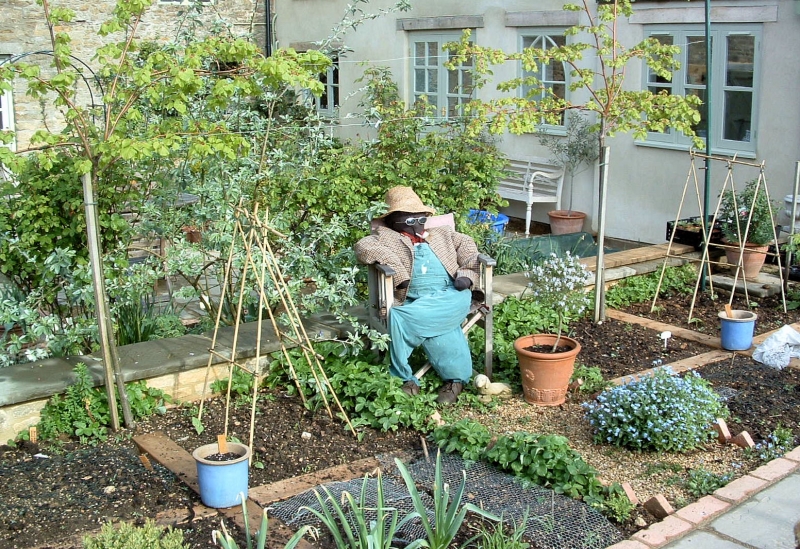Most of us don't live on 40000 hectares of land. We don't drive tractors, and we're not planting fields. Most of us have a small, average sized yard with perhaps enough room for a small garden, some outdoor seating and a play area for the kids.
But that doesn't mean we can't enjoy the benefits of home-grown produce. There are many things you can do on a small plot of land to maximize its use, enjoyment and productivity.
Another issue for many small homeowners and landowners is maintenance. While the idea of growing your own produce is rather romantic, the fact that is, someone must maintain it, nurture it and ensure its health.
Depending on your resources, and your imagination, it's possible to have a flourishing and productive yard, even if it's only small.
Here are three low-maintenance tips to help you get the most our of your small yard.
The Square Foot Garden
Square Foot Gardening (also known as SFG) is a structured low maintenance system of planting and producing a good quantity of produce in a small enclosed area. The square foot garden method was popularized by TV presenter Mel Bartholomew in the 1970's and is still popular today. These box-style garden beds are easy to make and easy to maintain.
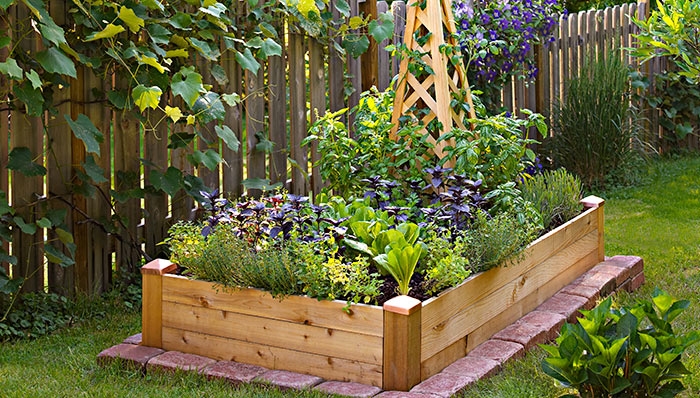
David Trounce, 2016 CC0 License
You can use almost any material in creating the raised garden beds, but cedar or pressure-treated wood are the most common.
For the sake of your environment and your soil, I suggest you avoid CCA Preservative (Chromated Copper Arsenate) timber and instead go for ACQ Preservative (Alkaline Copper Quarternary).
ACQ sleepers, which you will find at NHS Trade (Australia), or any good home and timber hardware, are a little more expensive but they are much safer for your soil and the environment.
The square foot garden is ideal for a diverse range of vegetable plants, and herbs.
Beans and peas work well since they do not require much space or particular care. In some regions, like those from Balkan, peppers and tomatoes tend to flourish in the SFG. Carrots, cucumbers and eggplants can also flourish, but they will require larger space.
A Low Maintenance Lawn
Unless you enjoy mowing your lawn every other week in summer, you need to choose your lawn type carefully.
The last thing you want going on around your square foot gardening or planter boxes is an ever-trailing and fast growing lawn like Kikuyu running in, up and under you vegetables.
For a low maintenance lawn in a small space and one that doesn’t require too much lawn mowing, Chewing Fescue grass is ideal. Chewing Fescue is probably the most popular type of lawn in New Zealand, North America and Canada due to its beautiful color, high resistance to drought and huge shade tolerance.
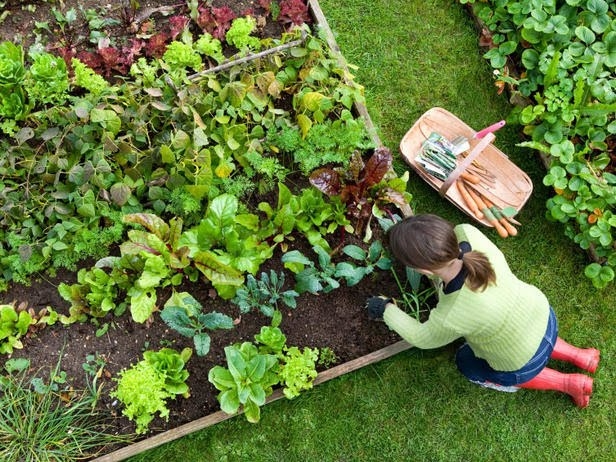
David Trounce, 2016 CC0 License
There are many varieties of Fescue grass, but one of the best low maintenance types is the Chewing Fescue. It has an amazing texture and excellent ground cover.
You only need to feed the ground about three times a year to keep up good levels of nitrogen. When it comes to mowing, try to use sharp blades and cut the grass higher during the fall and spring.
That means you should mow it 2 and 3 inches high, but during the summer let that be between 3 and 4 inches.
Chewing Fescues don't require much water, but that doesn't necessarily mean they can survive without it. During the spring and fall 1 inch of water per week will be enough, and during the summer you can water it a bit more.
This type of grass if frost-resilient so stop feeding it before colder weather and make sure you clean the leaves and debris. You can continue mowing it if required just keep an eye on the height.
Shade and Seating
So, you have your garden of vegetables, herbs and flowers in a well managed SFG. You have a lawn that is low maintenance, yet beautiful.
All we need is somewhere to sit so we can watch and enjoy our little green universe. No garden or backyard is complete without somewhere to sit in the cool of the day and look out over the work of your hands.
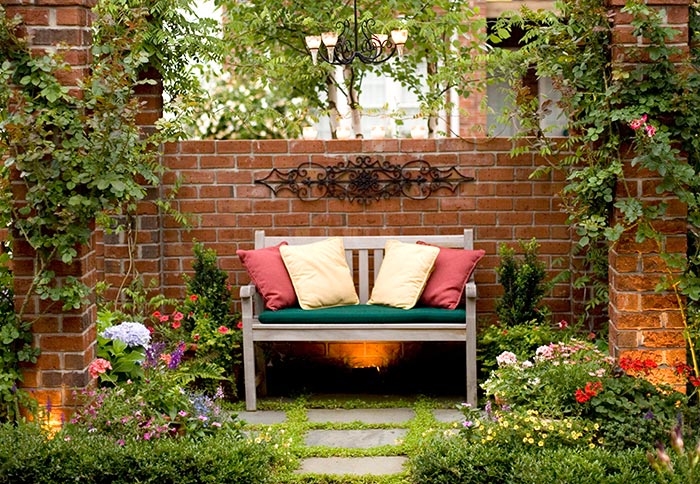
David Trounce, 2016 CC0 License
And what looks more beautiful than a mini pergola, overflowing with trumpet vine, Wisteria or, for the tidy-minded some weather proof or louvered roofing to give shade on a hot summer's day.
For tight spaces near a the house, an Eclipse or HV Aluminium style pergola with adjustable louvres are low maintenance and make it easy to control temperature and airflow.
For those wanting something more earthy, you can purchase or build your own simple pergola frame and decorate it with your favourite climbing plants.
Bougainvilleas (Bougainvillea spp.)
Bougainvilleas are a fast growing sub tropical climber that bloom in a variety of colours including red, purple, pink apricot, orange and cream.
They are a little thorny and so require more maintenance.
Golden Trumpet Vine (Allamanda cathartica)
Golden Trumpet are a softer alternative to the Bougainvillea. Their soft and clear yellow buttercup flowers with strips of orange in the throat will flower from spring to autumn.
Golden Trumpet are a vigorous evergreen twining vine and appreciate a sheltered warm position with plenty of and some support during the early years.
Stephanotis or Madagascar Jasmine (Stephanotis floribunda)
This is a delicious, small perfumed climbing vine with white flowers that common in bridal bouquets. When budding, the flowers are pointed and develop a star-shaped when open.
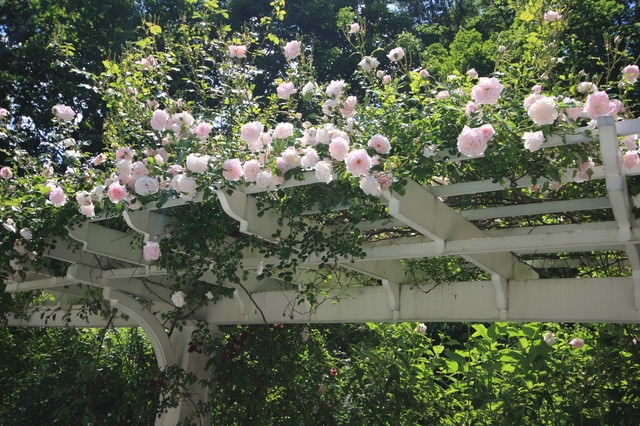
David Trounce, 2016 CC0 License
Madagascar Jasmine grows well in warmer climates and is particularly happy by the sea.They enjoy a sheltered position in full to partial sun and well-drained soil.
Orange Trumpet Creeper (Pyrostegia venusta)
A very popular climber with orange flowers. The Orange Trumpet Creeper will grow in moderate climates and is considered an evergreen that flowers throughout winter and spring.
It grows in full sun in well-drained soil but can become rampant so needs space to sprawl.
Author
 David Trounce
David Trounce
David is a blogger from Australia that writes about food, health, making stuff out of scraps, filling the earth with good things and feeding them to those who are hungry for beauty. He also writes about other topics like technology, eco-friendly cars and coal mines.
